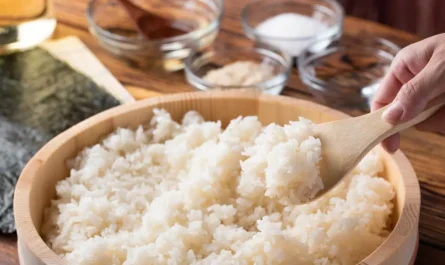The art of sushi-making is an age-old craft that involves skills passed down through generations. Central to this art is the nigiri rice forming technique, an essential skill for any sushi lover aiming to create perfect nigiri sushi. With a focus on consistency and delicacy, this method transforms humble rice into a canvas for exquisite seafood.
In this article, we’ll explore the nigiri rice forming technique, providing a comprehensive guide to mastering it. Whether you’re a seasoned chef or a home-cooking enthusiast, understanding this technique will enhance your culinary repertoire and deepen your appreciation for Japanese cuisine.

Understanding Nigiri Sushi
What is Nigiri?
Nigiri sushi is a popular form of sushi consisting of a slice of fresh fish or seafood placed atop a small, oblong mound of rice. It is known for its simplicity and highlights the quality of its ingredients.
Importance of the Nigiri Rice Forming Technique
The nigiri rice forming technique is critical because it affects the texture, taste, and overall presentation of the sushi. Properly formed rice enhances the sushi experience by maintaining the right balance and ensuring that each piece is a perfect bite.
The Ideal Rice for Nigiri
Choosing the Right Rice
For the best nigiri, short-grain Japanese rice is preferred due to its sticky nature, which helps hold the shape well. You can learn more about the features of Yamadanishiki rice here.
Preparation of Sushi Rice
Before employing the nigiri rice forming technique, sushi rice must be correctly prepared. It involves rinsing to remove excess starch, soaking, and properly cooking the rice. Check out these soaking tips to ensure perfect rice every time.
Steps to Perfect Nigiri Rice Formation
Step 1: Prepare Your Ingredients
Ensure all ingredientsincluding fresh fish and sushi riceare ready and within reach. Having everything prepared will streamline the process.
Step 2: Hand Moistening
Dip your fingers in tezu water (a mix of water and vinegar) to prevent rice from sticking. This step is crucial in maintaining integrity while forming the rice.
Step 3: Taking the Right Amount of Rice
Using your right hand, gently scoop a portion of rice approximately the size of a ping-pong ball. This amount ensures the rice’s structure remains intact.
Step 4: Shaping the Rice
Mold the rice into an oblong shape with a gentle squeeze between the palms, ensuring even pressure to maintain the desired density and airiness.
Step 5: Applying the Fish
Place a thin slice of fish on your left hand, lay the rice on top, and gently press to adhere. The topping should feel like an extension of the rice, not a separate piece.
Step 6: Final Tweak and Presentation
Gently adjust the nigiri with your fingers for the perfect shape and presentation. This step emphasizes aesthetics and final adjustments.
Tools to Perfect Your Nigiri Craft
Essential Equipment
While skilled hands are your primary tool, a few essential items include a sharp knife, bamboo rolling mat, and tezu container. For maintaining your tools, learn about keeping them odor-free here.
Common Mistakes and Tips for Success
Avoid Overworking the Rice
Handling should be gentle yet firm. Overworking can lead to broken rice grains and affect the texture negatively.
Keep Your Workspace Clean
Maintaining a tidy workspace prevents contamination and enhances the quality of your nigiri craftsmanship.

FAQs
What kind of rice should I use for nigiri?
Short-grain Japanese rice is ideal due to its sticky nature, which holds the nigiri’s shape better.
How do I prevent rice from sticking to my hands?
Use tezu water (a mix of water and vinegar) to moisten your hands, which prevents sticking.
Can I use any type of fish for nigiri?
While various fish can be used, fresh and suitable-for-raw consumption types such as salmon, tuna, or halibut are preferred.
The skillful application of the nigiri rice forming technique can elevate your sushi experience to a culinary art form. For more insight into different types of rice, visit this guide.
This article contains affiliate links. We may earn a commission at no extra cost to you.



